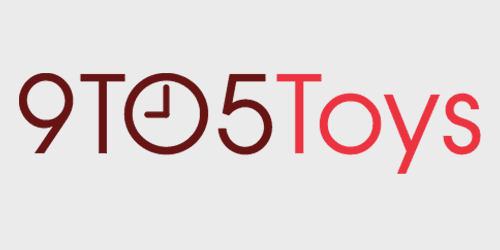After using an iPhone as my primary smartphone for the last few years, I’ve finally found a phone that I feel I can switch to: the Nokia Lumia 800. Read on for the full review.
For the last few years, people have been buying up iPhones. Not because the product’s technical specifications are top notch, or solely because of its industry leading App Store, but because of the simplistic, elegant, and integrated software package that it presents. Over the past few years, many have tried (and failed) to match the iPhone’s elegance, but the Nokia Lumia 800 is a true contender against the Apple iPhone in terms of simplicity and elegance.
Hardware:
The Lumia 800’s hardware is simple: it comes in a few different color options and it built out of a plastic unibody. Basically, the phone’s manufacturing somewhat mirrors Apple’s unibody notebook manufacturing process, but it’s plastic. Nokia went with plastic over metal in order to provide its customers with the best antenna reception and calling experience possible. The bottom of the phone features a precision-cut speaker grill that provides very good sound, the left of the phone is clean, the right features the volume up/down keys, a power/sleep/wake button, and a dedicated camera button. This camera button not only is used to take photos once in the camera app, but can actually launch the application itself. The Lumia 800 has some “feel” to it, and it feels extremely solid. Even if the material is technically plastic, everything but this phone is high-end and cell phone accessories like a cool case can easily spruce it up. The top of the phone features a standard-sized earphone jack, a place for a micro-sim, and the charger point. The only knock against the hardware is the seemingly breakable flap that covers the charging port.
Speaking of charging, in my tests, the battery life on the Lumia 800 is solid compared to a phone like the iPhone 4S. In many cases, the Lumia beat out the iPhone 4S in a days worth of web browsing, calling, tweeting, Facebook messaging, and playing games. Although the phone only packs a single core 1.4 GHz processing chip, the phone is blazing fast. This is mainly due to the incredible performance and underlying code of the Windows Phone operating system. Like in Apple’s early smartphone offerings, Nokia is offering a fast phone with solid performance because the operating system is extremely well-tuned to the offering. Even without the seemingly now standardized dual-core smartphone chip, the Lumia 800 fights its competitors well.
Software:
Like with the iPhone, the true magic of the Nokia Lumia 800 is its operating system. In this case, Windows Phone 7.5 Mango. Mango in a single word? Slick. Moving through the operating system is always fluid, always fun, and always hiccup-free. Starting at the lock screen, users can get a glance at their upcoming calendar events, the time, date, day of the week and glyphs representing particular notifications like mail and text messages. Once you reach the home screen, the live tile interface is wonderful and very helpful. I’ve got tiles for weather, people’s Facebook and Twitter updates, email, and more. The live tile for calendar is a neat example: it shows your upcoming appointments right from the home screen.
Everything in the user interface is easily accessible with just a swipe from the left of the home screen. Here, you get a nice list of all your Lumia 800’s applications. On that screen, you get a small magnifying glass that you can pickup to search through your device’s contents. Speaking of search, the Lumia 800 has a dedicated search button as a hardware feature. Click that button and you’re searching the web, media, and more – through Bing, Microsoft’s in-house search web software. All aspects of the operating system are fun and fluid. The user interface for all the applications follows a single, beautiful, and easy to navigate style guide. For instance, the email application has four main options: all, unread, flagged and urgent messages. Those mail features are shown at the top of the display, and you simply swipe across the gorgeous Lumia 800 display to navigate between those menus.
The Lumia does the standard software suite deal well (phone, messaging, email, web browsing), but their App Store is definitely lacking. Its limited title selection is such a disappointment for the gorgeous, clean, and easy to use operating system. One of the cornerstone features of the iPhone (and iOS in general) is its fantastic integration with your media. In terms of music listening on the Lumia, I’ve been sticking to Spotify. Simply because I am not in the Microsoft media ecosystem. Being in the Apple ecosystem makes it simple for me to just login to my iTunes Match account and get all my music on my iPhone. But if somebody is in the Microsoft ecosystem already, their Zune player interface on the Lumia 800 is superb. The interface does video + music, and it’s beautiful. It even records a history of your last played songs and includes third-party integration. For example, the built-in Zune player is able to pickup my recent Spotify tunes.
Overall:
Overall, the Lumia 800 is an incredible device for anyone not going for an iPhone. It’s the “iPhone of non-iPhones” – to put it simply. It’s fast, it’s clean, it’s gorgeous, and it’s easy-to-use. The learning curve is minutes and is a snap compared to some of the more complex Android devices. The Lumia 800 is currently not sold in the United States, but a U.S. version is coming in early 2012 for AT&T. Some of the added bonuses in this U.S. version are full 4G LTE compatibility, a 4.3 inch display (versus the Lumia 800 3.7 inch screen), and a front-facing camera for video conferencing.
FTC: We use income earning auto affiliate links. More.




Comments